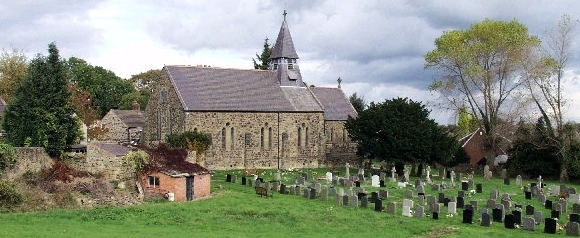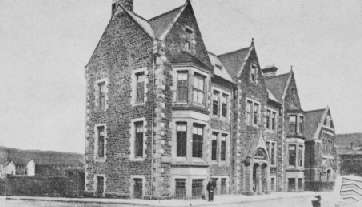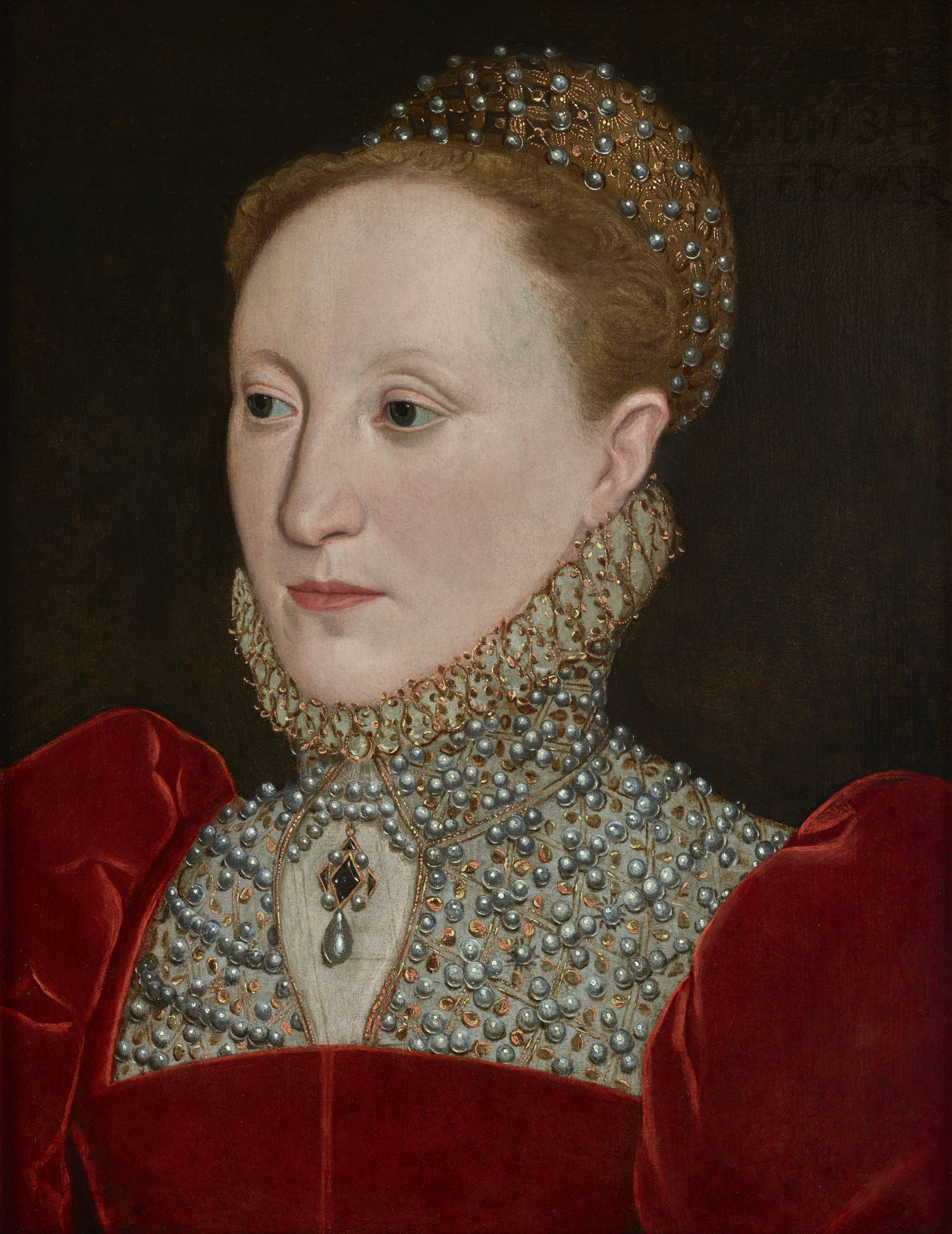|
Rhosllannerchrugog
RhosllanerchrugogDavies, Jenkins and Baines (eds) ''The Welsh Academy Encyclopedia of Wales'', 2008, p.752 (also spelled Rhosllannerchrugog, or simply Rhos) is a village and community in Wrexham County Borough, Wales. It lies within the historic county of Denbighshire. The entire built-up area including Penycae, Ruabon and Cefn Mawr had a population of 25,362. Etymology The name of the village is derived from that of the old Llanerchrugog estate, once one of the landholdings of Cynwrig ap Rhiwallon, Lord of Maelor Gymraeg.''Archaeologia Cambrensis: The Journal of the Cambrian Archaeological Association'', 1895, p.225-6 The name ''Llanerchrugog'' is usually stated to be based on Welsh llannerch, "''clearing''" or "''glade''"; and (with soft mutation), "''heathery''", although an etymology based on crugog, "hilly", "rough", has also been suggested.Morgan, ''A handbook of the origin of place-names in Wales and Monmouthshire'', 1887, p.50 The name of the mining village which l ... [...More Info...] [...Related Items...] OR: [Wikipedia] [Google] [Baidu] |
Wrexham County Borough
Wrexham County Borough ( cy, Bwrdeistref Sirol Wrecsam) is a county borough, with city status, in the north-east of Wales. It borders England to the east and south-east, Powys to the south-west, Denbighshire to the west and Flintshire to the north-west. The county borough has a population of 136,055. The city of Wrexham is its largest settlement, which together with villages such as Gwersyllt, New Broughton, Bradley and Rhostyllen form a built-up area with 65,692 residents. Villages in the county borough also include Ruabon, Rhosllanerchrugog, Johnstown, Acrefair, Bangor-on-Dee, and Coedpoeth amongst others. The county borough has two outlying towns, Chirk and Holt, and various rural settlements in the county borough's large salient in the Ceiriog Valley, and the English Maelor. The area has strong links with traditional industries such as coal-mining and brewing, although modern manufacturing has since succeeded those former industries. The county borough was formed on 1 ... [...More Info...] [...Related Items...] OR: [Wikipedia] [Google] [Baidu] |
Pen-y-cae, Wrexham
Pen-y-cae is a village and Community (Wales), community in Wrexham County Borough, Wales. The population of the community taken at the United Kingdom 2011 Census, 2011 census was 3,389. It adjoins the larger village of Rhosllanerchrugog. Etymology Pen-y-cae means 'head of the field' or 'end of the field'. It is not an uncommon name, with three other settlements in Wales having the same name: *Pen-y-cae, Powys *Bridgend, Pen-y-cae, Bridgend *Neath Port Talbot, Pen-y-cae, Neath Port Talbot Although often written as one word without hyphens, in its correct form the name is hyphenised due to the definite article 'y' preceding a single-syllable element. History The village was part of the ancient parish of Ruabon and the district was known as ''Dynhinlle Uchaf'' (but also known as ''Y Dref Fechan'' or ''Cristionydd Fechan''). The new parish of Pen-y-cae was formed 1879, from parts of the existing parishes of Ruabon, Rhosllanerchrugog and Rhosymedre. St Thomas' Church Pen ... [...More Info...] [...Related Items...] OR: [Wikipedia] [Google] [Baidu] |
Ruabon
Ruabon ( cy, Rhiwabon ) is a village and community in Wrexham County Borough, Wales. The name comes from ''Rhiw Fabon'', ''rhiw'' being the Welsh word for "slope" or "hillside" and ''Fabon'' being a mutation from St Mabon, the original church name, of earlier, Celtic origin. An older English spelling, ''Rhuabon'', can sometimes be seen. In 2001, more than 80% of the population of 2,400 were born in Wales, with 13.6% having some ability in Welsh. Early history There is evidence that a settlement existed in Ruabon in the Bronze Age. In 1898, building works in the centre of Ruabon exposed a cist or stone urn containing cremated human remains dating from 2000 years BC. In 1917, the remains of a Bronze Age round barrow were discovered on the playing fields of Ruabon Grammar School; they contained human remains, a flint arrowhead and a bronze axe. Overlooking Ruabon, the Gardden ( cy, Caer Ddin) is an ancient hillfort surrounded by circular ditches, dating back to the Iron Age. ... [...More Info...] [...Related Items...] OR: [Wikipedia] [Google] [Baidu] |
Clwyd South (UK Parliament Constituency)
Clwyd South ( cy, De Clwyd) is a constituency of the House of Commons of the Parliament of the United Kingdom (Westminster). The constituency was created in 1997, and it elects one Member of Parliament (MP) by the first past the post method of election. The Clwyd South Senedd constituency was created with the same boundaries in 1999 (as an Assembly constituency). Boundaries The constituency straddles the authorities of Denbighshire and the borough of Wrexham. Main population centres includes the suburbs of Ruabon, Chirk, Rhosllannerchrugog, Cefn Mawr and Coedpoeth to the south of the city of Wrexham, in addition to Llangollen and Corwen further up the Dee valley to the west. Until the 2010 election, the constituency used to include a small part of the preserved county of Powys. This anomaly was resolved by the Boundary Commission for Wales with the boundaries first used in 2010. The constituency comprises the following electoral wards: *From Wrexham: Overton, Broni ... [...More Info...] [...Related Items...] OR: [Wikipedia] [Google] [Baidu] |
Miners' Institute
Miners' institutes, sometimes known as ''workingmen's institutes'', ''mine workers' institutes'', or ''miners' welfare halls'' are large institutional buildings that were typically built during the height of the industrial period as a meeting and educational venue. More commonly found in Britain, miners' institutes were owned by miner groups who gave a proportion of their wage into a communal fund to pay for the construction and running of the building. The institutes would normally contain a library, reading room and meeting room. Miners' institutes of North and South Wales During the late 19th century, with the population growth seen in former rural communities, many industrialised areas saw workers contributing to funds to build institutes. This was typified in the southern coalfield of Wales, which by 1910 saw institutes built in most towns and villages.''The Welsh Academy Encyclopaedia of Wales''. John Davies, Nigel Jenkins, Menna Baines and Peredur Lynch (2008) pg558 The ... [...More Info...] [...Related Items...] OR: [Wikipedia] [Google] [Baidu] |
Community (Wales)
A community ( cy, cymuned) is a division of land in Wales that forms the lowest tier of local government in Wales. Welsh communities are analogous to civil parishes in England. There are 878 communities in Wales. History Until 1974 Wales was divided into civil parishes. These were abolished by section 20 (6) of the Local Government Act 1972, and replaced by communities by section 27 of the same Act. The principal areas of Wales are divided entirely into communities. Unlike in England, where unparished areas exist, no part of Wales is outside a community, even in urban areas. Most, but not all, communities are administered by community councils, which are equivalent to English parish councils in terms of their powers and the way they operate. Welsh community councils may call themselves town councils unilaterally and may have city status granted by the Crown. In Wales, all town councils are community councils. There are now three communities with city status: Bangor, St Asaph ... [...More Info...] [...Related Items...] OR: [Wikipedia] [Google] [Baidu] |
Dyfnwal Moelmud
Dyfnwal Moelmud (Welsh for "Dyfnwal the Bald and Silent"; la, Dunvallo Molmutius; ) was accounted as an early king and lawmaker among the Welsh, credited with the codification of their standard units of measure. He also figures as a legendary king of the Britons in Geoffrey of Monmouth's pseudohistorical '' History of the Kings of the Britons''. History Only two known historical documents mention Dyfnwal. A tenth-century genealogy in the British Library (Harley MS 3859) identifies him as the grandson of Coel Hen, and ancestor of Morcant Bulc. A fifteenth-century genealogy in Jesus College, Oxford (MS 20) also identifies him in the same way. Legend In Geoffrey's account, Dyfnwal was the son of Cloten, the King of Cornwall, and he restored order after the "Civil War of the Five Kings". His family was a cadet branch of the dynasty of Brutus, the dominant line having ended with Porrex I before the civil war. The ''Book of Baglan'' expands on this by making Dyfnwal descend direct ... [...More Info...] [...Related Items...] OR: [Wikipedia] [Google] [Baidu] |
Labour Movement
The labour movement or labor movement consists of two main wings: the trade union movement (British English) or labor union movement (American English) on the one hand, and the political labour movement on the other. * The trade union movement (trade unionism) consists of the collective organisation of working people developed to represent and campaign for better working conditions and treatment from their employers and, by the implementation of labour and employment laws, from their governments. The standard unit of organisation is the trade union. * The political labour movement in many countries includes a political party that represents the interests of employees, often known as a " labour party" or " workers' party". Many individuals and political groups otherwise considered to represent ruling classes may be part of, and active in, the labour movement. The labour movement developed as a response to the industrial capitalism of the late 18th and early 19th centuries, at a ... [...More Info...] [...Related Items...] OR: [Wikipedia] [Google] [Baidu] |
Whigs (British Political Party)
The Whigs were a political faction and then a political party in the Parliaments of England, Scotland, Ireland, Great Britain and the United Kingdom. Between the 1680s and the 1850s, the Whigs contested power with their rivals, the Tories. The Whigs merged into the new Liberal Party with the Peelites and Radicals in the 1850s, and other Whigs left the Liberal Party in 1886 to form the Liberal Unionist Party, which merged into the Liberals' rival, the modern day Conservative Party, in 1912. The Whigs began as a political faction that opposed absolute monarchy and Catholic Emancipation, supporting constitutional monarchism with a parliamentary system. They played a central role in the Glorious Revolution of 1688 and were the standing enemies of the Roman Catholic Stuart kings and pretenders. The period known as the Whig Supremacy (1714–1760) was enabled by the Hanoverian succession of George I in 1714 and the failure of the Jacobite rising of 1715 by Tory rebels. The Whig ... [...More Info...] [...Related Items...] OR: [Wikipedia] [Google] [Baidu] |
Nonconformist (Protestantism)
In English church history, the Nonconformists, also known as a Free Church person, are Protestant Christians who did not "conform" to the governance and usages of the established church, the Church of England (Anglican Church). Use of the term in England was precipitated after the Restoration of the Stuart monarchy in 1660, when the Act of Uniformity 1662 renewed opposition to reforms within the established church. By the late 19th century the term specifically included other Reformed Christians ( Presbyterians and Congregationalists), plus the Baptists, Brethren, Methodists, and Quakers. The English Dissenters such as the Puritans who violated the Act of Uniformity 1559 – typically by practising radical, sometimes separatist, dissent – were retrospectively labelled as Nonconformists. By law and social custom, Nonconformists were restricted from many spheres of public life – not least, from access to public office, civil service careers, or degrees at university � ... [...More Info...] [...Related Items...] OR: [Wikipedia] [Google] [Baidu] |
George I Of Great Britain
George I (George Louis; ; 28 May 1660 – 11 June 1727) was King of Great Britain and Ireland from 1 August 1714 and ruler of the Electorate of Hanover within the Holy Roman Empire from 23 January 1698 until his death in 1727. He was the first British monarch of the House of Hanover as the most senior Protestant descendant of his great-grandfather James VI and I. Born in Hanover to Ernest Augustus and Sophia of Hanover, George inherited the titles and lands of the Duchy of Brunswick-Lüneburg from his father and uncles. A succession of European wars expanded his German domains during his lifetime; he was ratified as prince-elector of Hanover in 1708. After the deaths in 1714 of his mother Sophia and his second cousin Anne, Queen of Great Britain, George ascended the British throne as Anne's closest living Protestant relative under the Act of Settlement 1701. Jacobites attempted, but failed, to depose George and replace him with James Francis Edward Stuart, Anne's Catholi ... [...More Info...] [...Related Items...] OR: [Wikipedia] [Google] [Baidu] |
Jacobitism
Jacobitism (; gd, Seumasachas, ; ga, Seacaibíteachas, ) was a political movement that supported the restoration of the senior line of the House of Stuart to the Monarchy of the United Kingdom, British throne. The name derives from the first name of James II and VII, which in Latin translates as ''Jacobus (name), Jacobus''. When James went into exile after the November 1688 Glorious Revolution, the Parliament of England argued that he had abandoned the Kingdom of England, English throne, which they offered to his Protestant daughter Mary II, and her husband William III of England, William III. In April, the Convention of Estates (1689), Scottish Convention held that he "forfeited" the throne of Scotland by his actions, listed in the Articles of Grievances. The Revolution thus created the principle of a contract between monarch and people, which if violated meant the monarch could be removed. Jacobites argued monarchs were appointed by God, or Divine right of kings, divine right, a ... [...More Info...] [...Related Items...] OR: [Wikipedia] [Google] [Baidu] |









